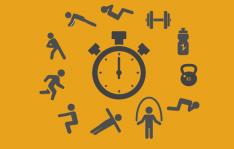Listen to Your Body
1 of 6
First, listen to your body; look after it, and give yourself a break when you know you need one—especially with the summer heat. Heart rate is a reliable indicator of exercise intensity, so training with a heart rate monitor can help you work hard—but not too hard—in higher temperatures. Carfrae, for example, uses Polar to help her focus on the most important metrics to keep her on pace and successful, allowing her to stay completely focused during training.
Find:
Your Next RaceLong Runs
2 of 6
A long aerobic run is important for triathletes, but the definition of "long" can vary based on what type of race you're training for. For Carfrae, a long run is about 18 miles; but regardless of the exact mileage, what matters most is that this run is done at a conversational aerobic pace and at about 50 to 60 percent of your max heart rate.
Don't think you can find a conversational pace? Check out this step-by-step guide to breathing while running.
Find:
Your Next RaceIntervals
3 of 6
Speed sessions and intervals make you faster and more efficient, testing your body's limits in short bursts of exertion. You must go all out and as fast as you can, followed by a period of rest. Make sure to warm-up properly beforehand and let your body recover afterwards. Try out the following workout to get you started.
- Warm up for 20 minutes at an aerobic effort
- 3 x 20 seconds all-out power production, 4:40 easy Zone 1 spinning
- 3 x 10 seconds all-out power production, 4:50 easy Zone 1 spinning
- Cool down with easy spinning
Find:
Your Next RaceEasy Runs
4 of 6
Easy runs round out the summer season. This means about 3 to 5 miles for the average person. Try doing these with short, 15 second fast pickups, a series of intervals with increased speed followed by recovery, to maintain feel and efficiency.
Find:
Your Next RaceActive Recovery
5 of 6
Post-workout recovery is essential. After a run, Carfrae will hydrate with a chocolate milk (sometimes two) to start the recovery process. Once you're home, it's time for more eating, hydration and a session with an ice bath, NormaTec—a form of compression that massages your limbs and mobilizes fluid to speed up the recovery process—or other similar recovery method. Most importantly, don't forget to cap your day off with a good night's sleep.
Active recovery can include a light morning session to flush out the legs; for Carfrae, this is usually swimming. Later the same day, try an easy recovery run. The goal for this run is a low heart rate with no intensity and at a conversational pace. To prevent the effort from increasing and missing the true goal of the run, try locking in a heart rate with the Polar V800, which will alert you by beeping if you get outside your ideal range.
Lastly, remember if you want to achieve anything, it's up to you to get it done. Training in the summer will only make you perform better when the weather starts to cool down.







Discuss This Article